ItemNo :
LITH-BERMOQ :
1Compliance:
CE CertifiedWarranty:
2 yearsDelivery Time:
2 daysLithium Battery Electrode Sheet Resistance Tester
Introduction
Combined with high-precision pressure control, thickness and resistance testing systems, the dual-plane controllable pressure disc electrode resistance method is used to test the overall penetration internal resistance of the electrode, including coating resistance, interface resistance between coating and current collector, and current collector resistance. The sum can be used for electrode sheets formulation development and process stability monitoring.
Characteristic
1. Create a new method for testing electrode resistance to evaluate the uniformity of the electrode conductive network;
2. Fully automatic testing software, parameters can be set freely and can be started with one click;
3. Real-time monitoring and output of pressure, pressure, ambient temperature, ambient humidity, thickness, resistance, resistivity, conductivity, compaction density and other parameter curves, and automatically save test data.
4. Equipped with standard thickness blocks and resistance blocks calibrated by a third-party metrology institute.
Applications
1. Material evaluation
2. Process evaluation
3. Cell failure analysis
Description
The Battery Electrode Resistance Analyzer(BER series) adopts the double-plane pressure-controllabledisk electrode to directly measure the overall resistivity of the real electrode, that is, the sum of the coating resistancethe contact resistance between the coating layer and current collector and the current collector resistance.

1. Our Unique Testing Process
1) Comprehensively assessment of tle mixing and coating stability of slurry, which helps to recognize the anomaly aggregation of conductive agents in advance;
2) Recognition of uneven mixing on mixture silicon-carbon anodes;
3) Assessment of conductivityof active materials with different formulas;
4) Assessment of conductivity of different conductive agents;
5) Assessment of conductivity of the fimctional pre-coating layers of current collector;
6) Failure analysis for the conductive network of electrode sheets;
7) Analysis of interface resistance of the cathode or andode electrode after formation.
2. The Limitations of Traditional Test Methods
Currently, there are several methods have been used to test the electrode resistance, such as four point probe method or multi point probe method and single point probe method. Though these traditional methods may have been maturely used in di&rent types of film industry areas, for the evaluation of the composite electrode films in lithium ion batteries, there are still several deficiencies that can not be ignored.
The four point probe film resistance test method has been wildly used in thin films industries, which use four or even more probes array to test the film resistance form film sur&ce. Its test procedure is easy and simple, and it can reveal the anisotropic resistance components of thin film by a simple equivalent circuit model fitting. However, considering its test principle and model fitting process, this mediod can only be suitable for a uniform thin film with smooth sur&ce, and the test sample should be loaded on an insulating substrate for ideal resistance fitting. Unfortunately, the electrodes ofliduum ion batteries are composite electrode with complex compositions, rough surfce and load on a low resistance current collector, so their four point probe test data, are often inconsistent and difficult to analyze the result by theoretical models. Increasing die probe number and using more complicate models can improve the test reliability to a certain extent, but that need more complex structures, and again the result analysis is still difficult.
The single point probe test method was another wildly used method in the lithium ion batteries industry, which use a fixed probe on the end of the curtent collector and a mobile probe on the surface of the electrode to directly measure the electrode resistance. This is a very simple way of electrode resistance test often carry out by a homebuilt system for difierent users, but it is still a rough empirical test method without considering the influence of press pressure, conductive path length, substrate materul and so on. As a result, the single point probe method can not provide a reliable and consistent electrode resistance data as well.
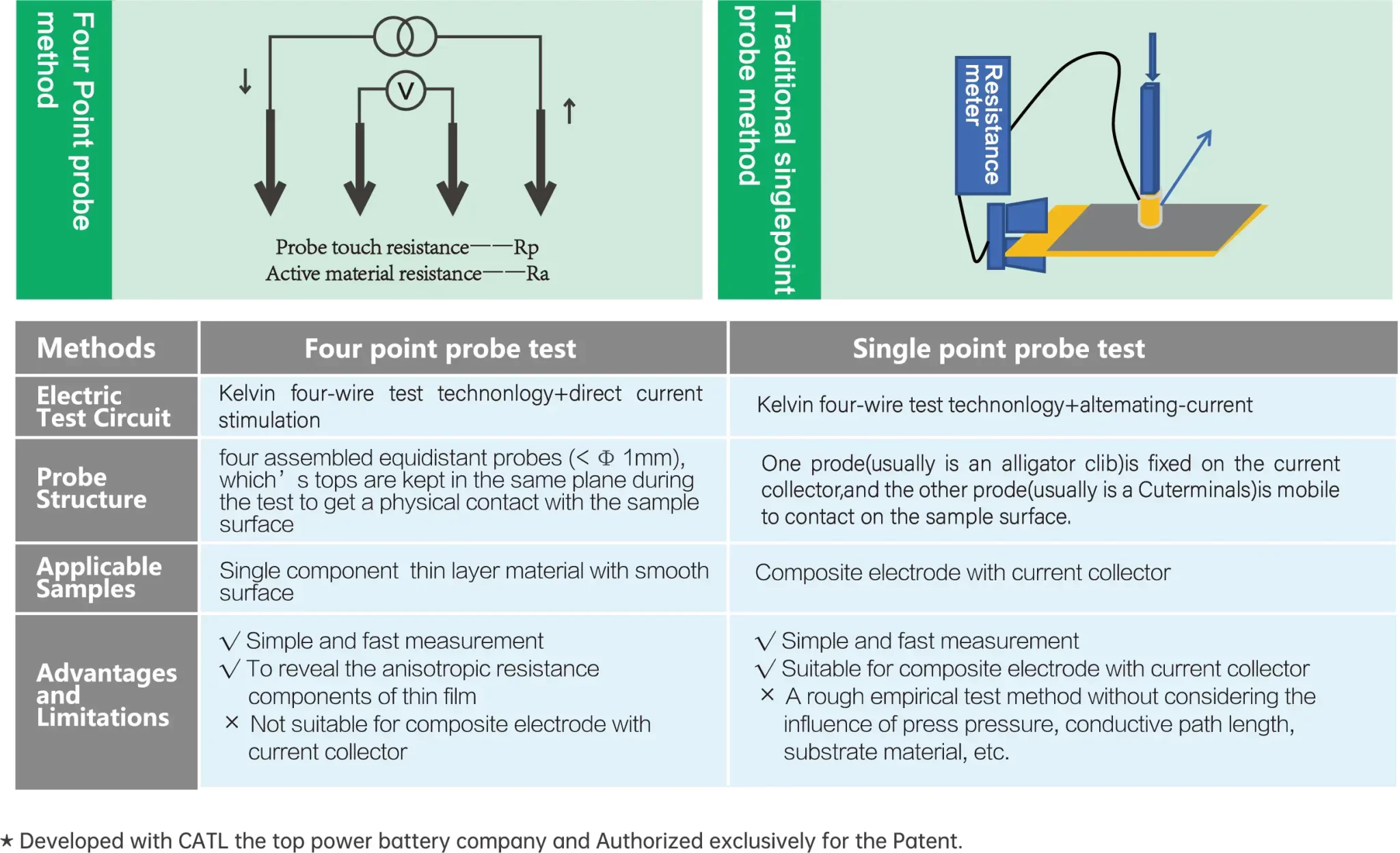
3. The LITH’s Creative Solution
The battery electrode resistance analyzer(BER series)uses two pressure-controllable plane probes to directy measure the electrode resistance, which can obtain the overal resislance and resistivity in the thickness directon of the electrode, includimng the contact the collector and the current.
The dual-plane, pressure-controllable, high-conductivity probe specially designed for composite electrode and micron-level flat surface treatment ensure the measurement accuracy, the high-precision resistance resolution and the attached calibration module ensure the stability and reliability of the results.


4. Measurement System Analyze
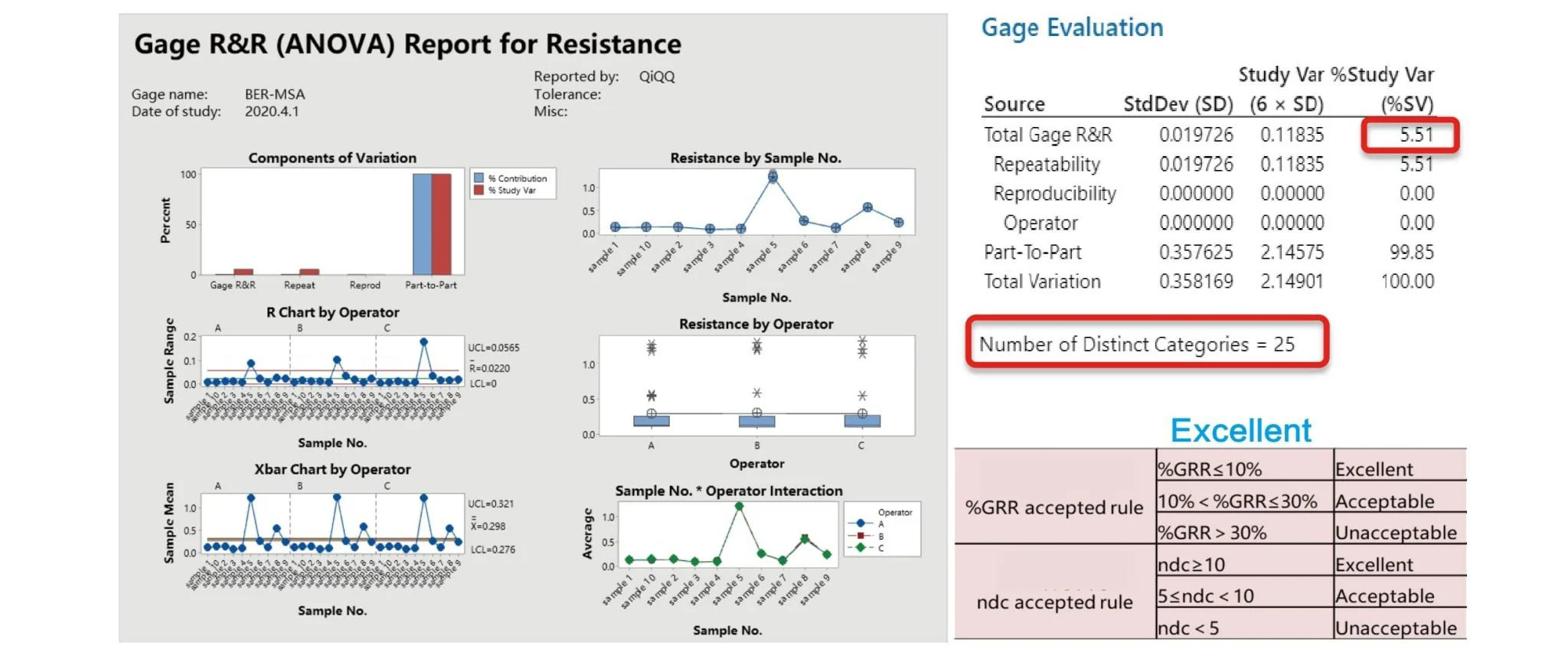
5. Applictions
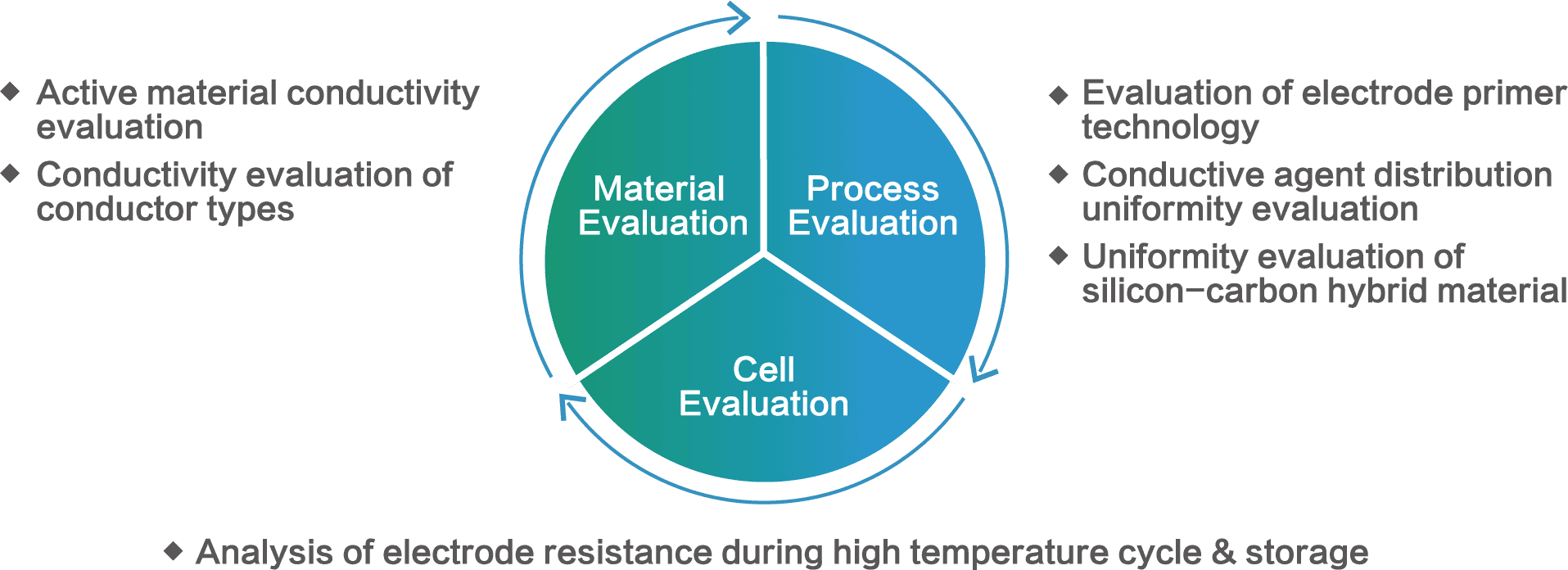
Application Cases
Case 1. Material Evaluation
1.1 Correlation powder conductivity and electrode conductivity
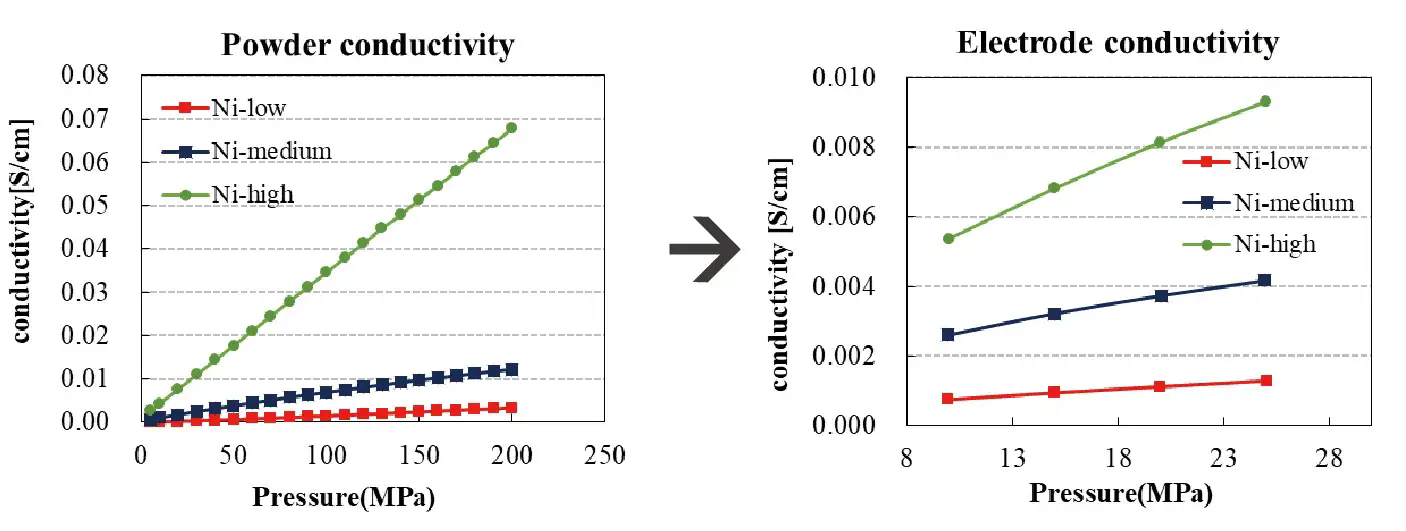
Conclusion:
1) Adjust the Ni content in the NCM material, and test the powder conductivity. It can be found that as the Ni content increases, the powder conductivity increases;
2) Comparing three NCM pieces with different Ni content, it can also be obtained that as the Ni content increases, the conductivity of the electrode piece increases;
3) Powder resistivity and electrode have the same trend!
1.2 Conductivity Evaluation of Conductive Agents
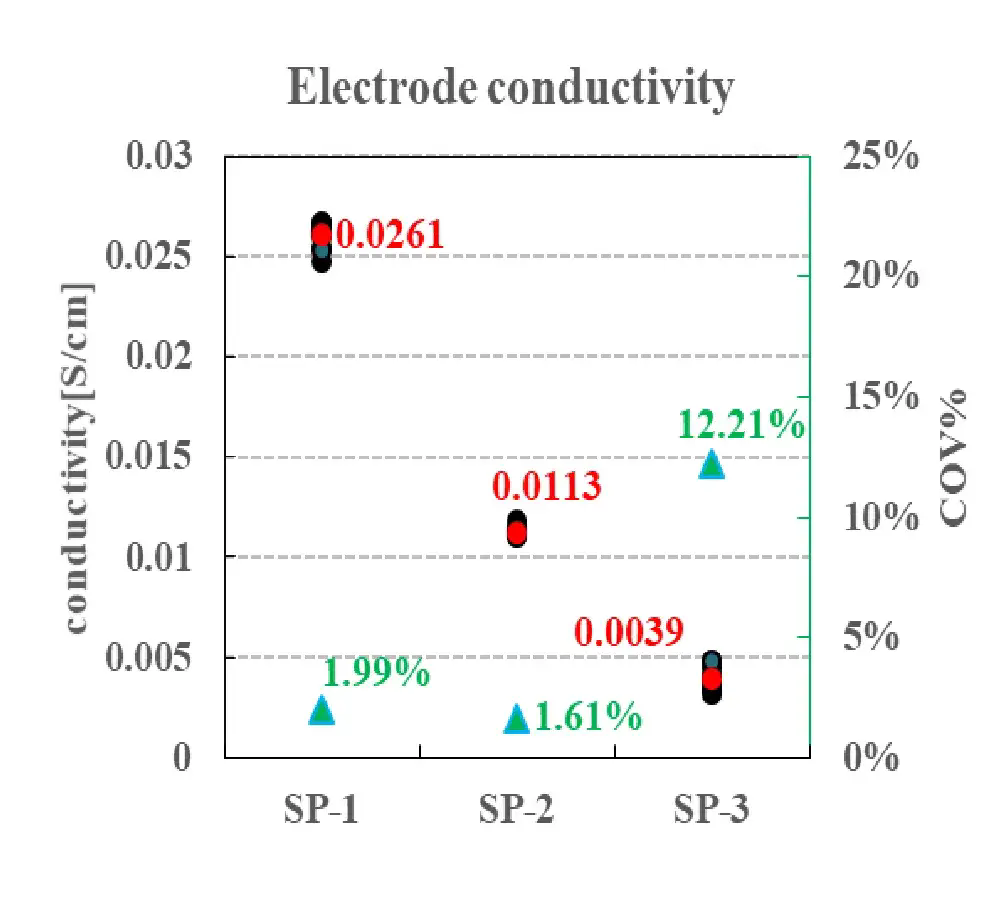
(Note: Coefficient of Variation(COV)=(Standard Deviation SD/Mean)×100%)
Constant pressure test
1) Pressure: 25MPa
2) Holding time: 25s
3) Points tested: 15 points
Conclusion:
Electrode conductivity characterization can be used to evaluatethe conductivity and dispersion performance of conductive agents!

Conclusion:
1) Different primer coating processes will change the conductivity of the current collector;
2) After coating 1~2µm primer material on the aluminum foil, the conductivity uniformity of the current collector is better.
Case 2. Process Evaluation
2.1 Uniformity evaluation for the distribution of conductive agent

Conclusion:
The quality of the first batch of the 10 anode electrodes is not acceptable as its resistivity is outside the normal range.
2.2 Positive and negative electrodes with different conductive agents

Conclusion:
The resistivity of the NCM electrodes decreases with the increase of Carbon content, and when the content is greater than 5%, the resistivity decreases slightly.
2.3 Separate the resistivity of the A and B coating layers for the double-coating electrode
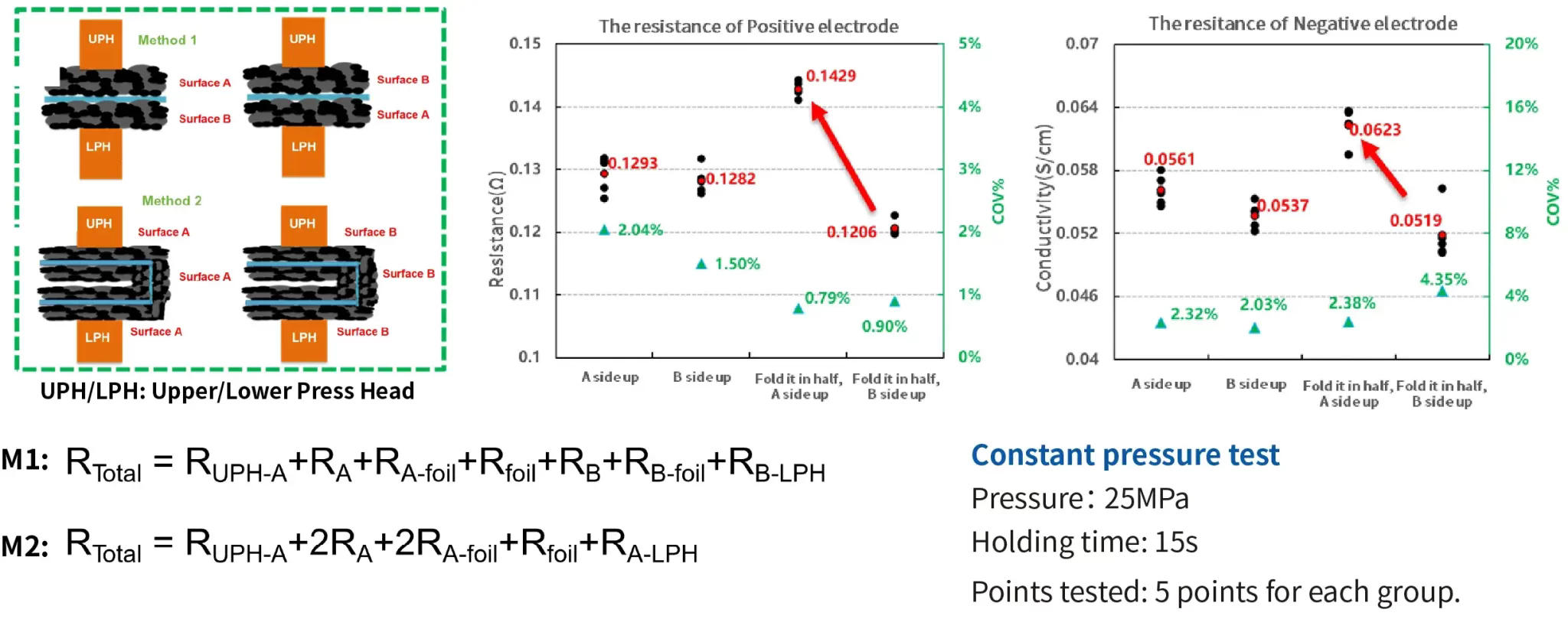
Conclusion:
1) When the A side or the B side is facing up alone, he differencein the resistance and uniformity ofthe electrode sheet is smal:
2) The diference between the A side and the B side after folding is mainly due to the difference in the coating on the two sides, so this method can be used to judge the difference in the coating on the AB side.
Case 3. Failure Analysis
3.1 Analysis of electrode resistance during high temperature cycle & storage

The resistance of the cathode continues to increase with the increase in the number of cycles, indicating that a large change has taken place on the cathode side after the high temperature cycle, which may be related to the byproducts on the surface of the cathode particles or the contact between the particles.
Conclusion:
1) The resistance of cathode electrodes increases with the number of cycles.
2) The resistance of anode electrodes increases with the storage time.
Specifications
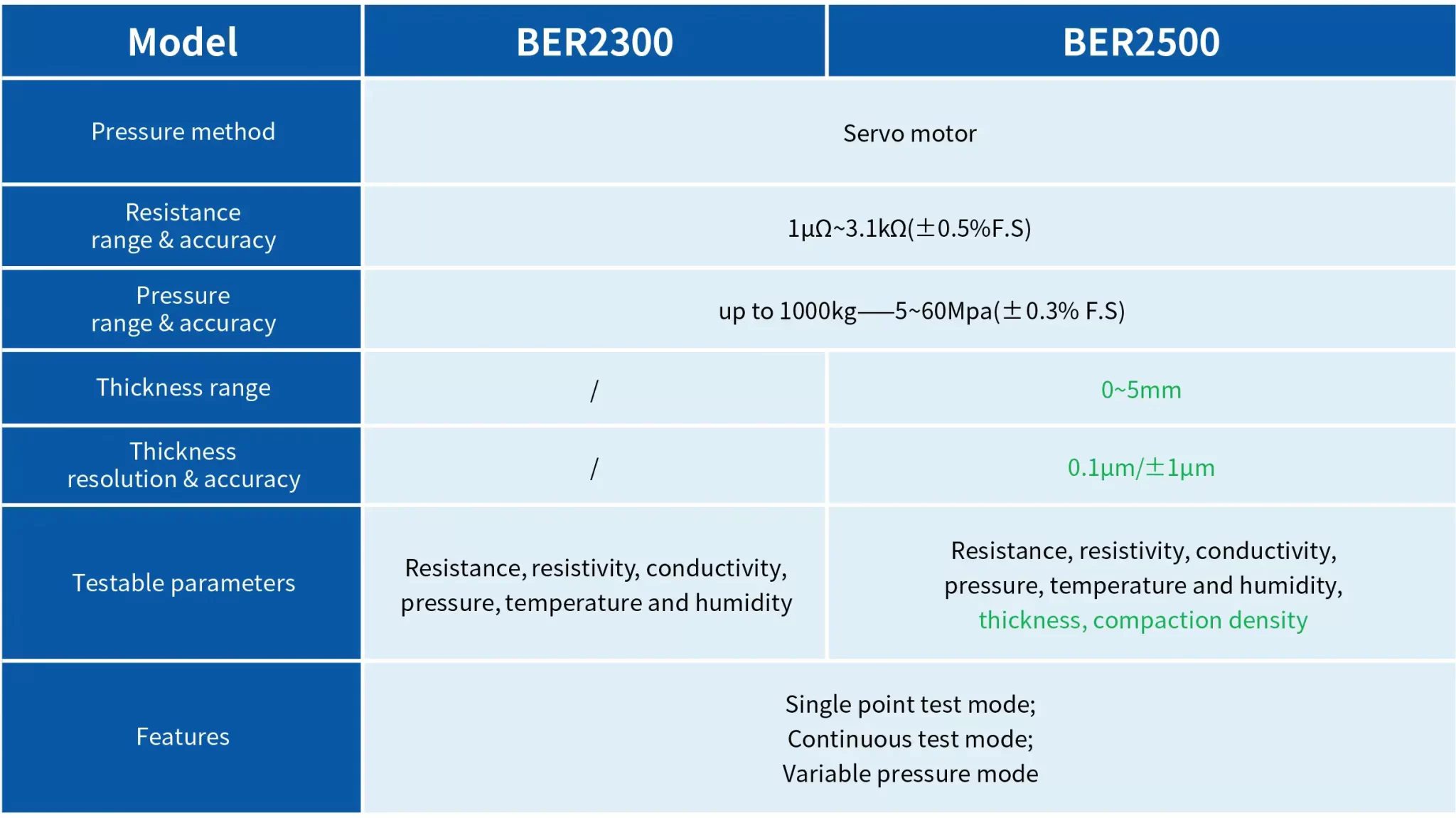

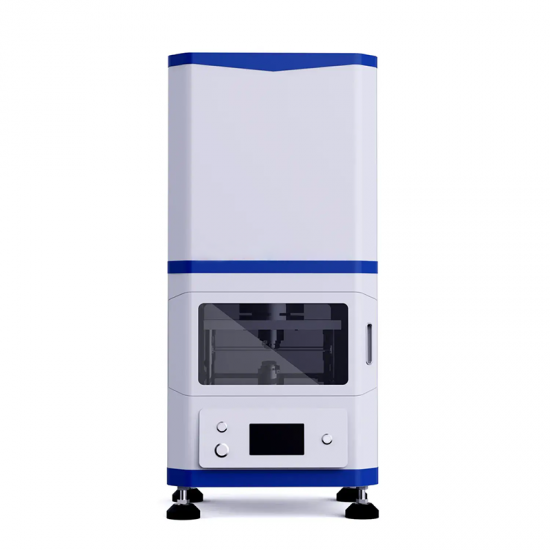
![]()
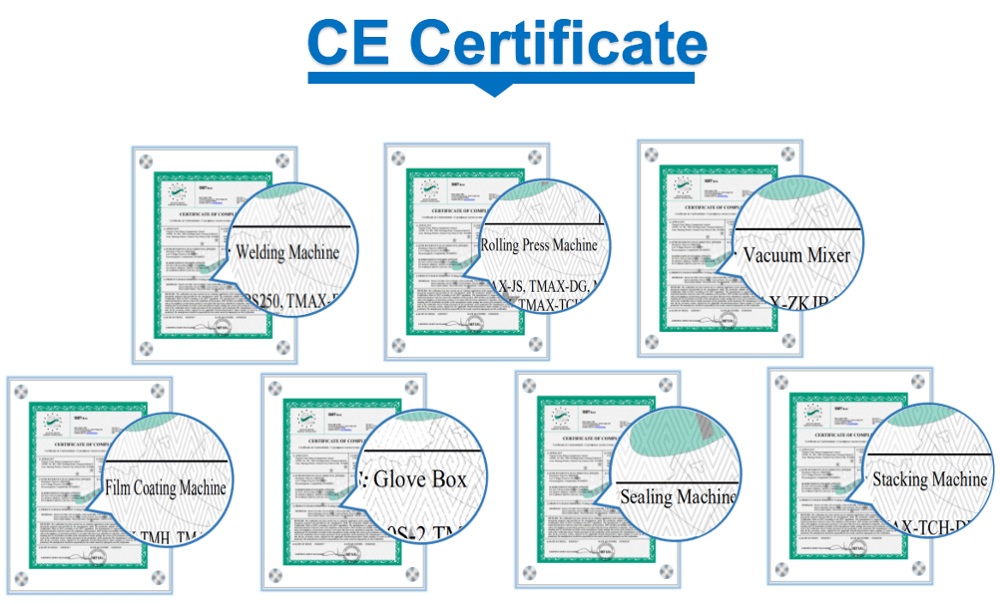
![]()

![]()
1 Standard exported package: Internal anticollision protection, external export wooden box packaging.
2 Shipping by express, by air, by sea according to customers' requirements to find the most suitable way.
3 Responsible for the damage during the shipping process, will change the damaged part for you for free.
DELIVERY TIME: 15-20 days after confirming the order, detail delivery date should be decided according to
production season and order quantity.


 ONLINE
ONLINE +86 13174506016
+86 13174506016 Louis@lithmachine.com
Louis@lithmachine.com +86 18659217588
+86 18659217588
 18659217588
18659217588